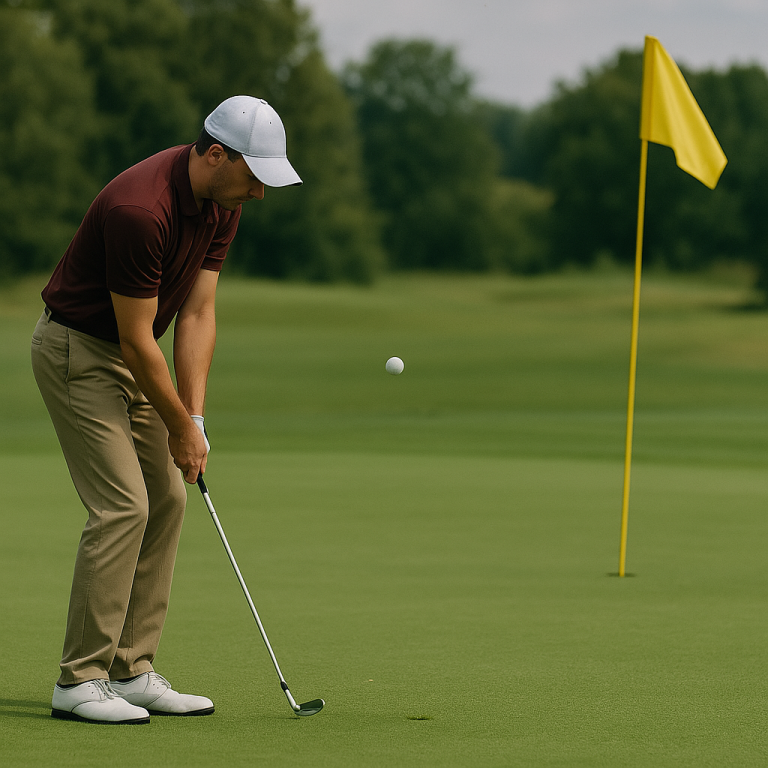Top 50 Golf Mistakes
Golfing Troop is reader supported. When you purchase using links on our website, we may earn an affiliate commission. Learn more.
Golf is a game of precision, patience, and practice—yet even the most experienced players find themselves slipping up. From beginner blunders to advanced errors, golf mistakes are part of the learning curve. Whether you’re shooting your first round or aiming to shave strokes off your handicap, identifying and correcting these common missteps can transform your game.
In this post, we’ll break down 50 top golf mistakes that plague players at all levels. You’ll not only recognize where you may be going wrong, but also learn how to fix it. Let’s tee off with the most common issues you should avoid.
Introduction to Golf Mistakes
Every golfer, regardless of experience, commits mistakes on the course. It’s part of the game’s charm and frustration. But consistent mistakes can derail your progress and impact your enjoyment. By recognizing and correcting these errors, you’ll not only play better but have more fun doing it.
Golf mistakes can happen in your stance, grip, mindset, swing mechanics, course management, and even in your etiquette. The good news? Most of these are fixable with awareness, practice, and a few strategic tweaks.
Let’s dive into the 50 top golf mistakes and how to avoid them.
Swing and Setup Mistakes
- Poor Posture – Slouching or standing too tall at address throws off balance and power.
- Weak Grip – A grip that’s too soft or improperly placed leads to inconsistent shots.
- Too Strong a Grip – Conversely, a grip that’s too strong can hook your ball uncontrollably.
- Incorrect Ball Position – Too far forward or back in your stance changes the impact angle.
- Tension in Hands and Arms – Tense muscles rob your swing of fluidity and speed.
- Over-Swinging – Trying to smash the ball often leads to loss of control.
- Casting the Club – Releasing the club too early kills distance and accuracy.
- Poor Weight Transfer – Staying stuck on your back foot results in topped or fat shots.
- Lack of Follow-Through – Cutting your swing short reduces power and direction.
- Not Aiming Properly – Even a great swing will miss the target if you’re aimed wrong.
These are some of the most fundamental golf mistakes you’ll see on the range. Fixing just one or two of these can dramatically improve your ball-striking.
Short Game Slip-Ups
- Neglecting the Short Game – Too many players focus only on drives and ignore chipping and putting.
- Using the Wrong Club Around the Green – One-size-fits-all doesn’t apply to wedges.
- Decelerating on Chips – Slowing the club through impact leads to chunked or bladed shots.
- Overusing the Lob Wedge – It’s not always necessary; simpler shots often yield better results.
- Poor Putting Alignment – Misreading lines and misaligning putter faces is a silent score killer.
- Ignoring Green Speed – Failing to adjust for fast or slow greens costs you strokes.
- Looking Up Too Early on Putts – Stay down until the ball’s gone to avoid mis-hits.
- Putting From Too Far Off the Green – Sometimes a chip is a smarter play.
- Lack of Practice – If you don’t work on your short game, it won’t improve.
- Not Reading Breaks Properly – Take your time to study the green’s slope and grain.
Many golfers underestimate how many shots are taken within 100 yards. Avoiding these golf mistakes can save more strokes than perfecting your drive.
Mental and Strategic Mistakes
- Letting One Bad Shot Ruin the Round – Golf requires a short memory and mental toughness.
- Playing Too Aggressively – High-risk shots often lead to big numbers.
- Failing to Warm Up Mentally – Rushing to the tee can cost you several strokes early.
- Ignoring Course Management – Strategic play beats raw power nine times out of ten.
- Not Tracking Performance – Without stats, it’s hard to know where to improve.
- Overthinking – Analysis paralysis destroys tempo and rhythm.
- Not Sticking to a Pre-Shot Routine – A solid routine breeds confidence.
- Being Too Outcome-Oriented – Focus on the process, not just the score.
- Comparing Yourself to Others – Stay in your lane and play your game.
- Getting Frustrated Too Easily – A calm head makes better decisions under pressure.
Mental errors often cause more damage than physical ones. Mastering your mindset helps reduce many common golf mistakes.
Equipment and Practice Pitfalls
- Using the Wrong Clubs for Your Game – A proper fitting can make a huge difference.
- Old Grips or Worn-Out Gear – Slick grips and worn wedges reduce performance.
- Not Getting Fitted – Off-the-rack clubs may not suit your swing.
- Practicing Without Purpose – Just hitting balls doesn’t equal improvement.
- Ignoring Fundamentals During Practice – Reinforcing bad habits only makes them stronger.
- Not Taking Lessons – DIY learning only goes so far without feedback.
- Using Range Balls to Judge Distance – They don’t fly like real balls.
- Practicing Only Your Strengths – You won’t grow unless you work on weaknesses.
- Neglecting Fitness – Golf requires flexibility, strength, and endurance.
- Skipping Warm-Ups – Cold swings lead to injuries and bad starts.
Smart players use practice and equipment to eliminate golf mistakes before they show up in a round.
On-Course Etiquette and Habits
- Talking During Swings – Distracting others is poor etiquette.
- Standing in the Wrong Spot – Know where to stand during others’ shots.
- Slow Play – Nothing ruins a round like a five-hour pace.
- Not Repairing Divots or Ball Marks – Leave the course better than you found it.
- Throwing Clubs – Bad form in every sense.
- Not Raking Bunkers – Respect the next player.
- Misplacing Clubs Around the Green – Leads to lost clubs and wasted time.
- Ignoring Playing Partners – Be friendly; golf is social.
- Breaking Rules Out of Ignorance – Learn basic rules to avoid penalties.
- Cheating – Nothing kills integrity faster.
Golf is a gentleman’s game. Avoiding etiquette errors shows respect for others and the game—and helps eliminate behavioral golf mistakes.
Conclusion: Mastering the Game by Minimizing Mistakes
No one plays a perfect round. Even the pros deal with shanks, duffs, and mental meltdowns. But improvement comes from awareness and consistency. By identifying your most frequent golf mistakes, you can work on correcting them systematically.
Start by picking just 3–5 of these 50 that apply most to your game. Focus your next few practice sessions and rounds on those areas. You’ll be surprised how quickly your scores improve when you eliminate even a handful of these common issues.
Remember, golf is a journey. And while mistakes are inevitable, how you respond to them determines your growth. Embrace the process, learn from your errors, and enjoy the ride.
What are the biggest golf mistakes you’ve struggled with? Drop them in the comments below—we’d love to hear your stories and help you find solutions.
Happy swinging!







